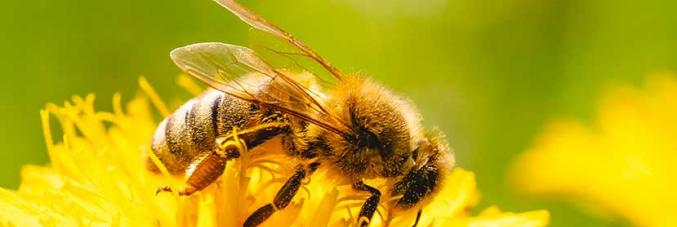
Solitary bees, a resource for agriculture and landscape
04.02.2020
Bees play an essential role as pollinators in agricultural and in wild environments: like other species of pollinators, such as butterflies and midges, bees are under threat for many reasons, but none as threatening than that of humankind. The agricultural choices that are made, such as the cultivation of single individual types of vegetables or the use of pesticides, have huge negative effects on the number of and diversity of bee species.
Although scientific and public attention has focused mainly on honeybees, there are more than 20,000 different species of solitary bees. Therefore, we should consider these solitary bee species as a natural resource for agricultural planning and landscape management. However, unlike honeybees, there continues to be limited knowledge on the biology of solitary bees, as well as the interaction within this pollinator species and the causes of their marked disappearance.
In collaboration with Lars Chittka, and Ana Híjar-Islas from Queen Mary University of London, and project manager Olli Loukola, from the University of Oulu in Finland, researchers from the University of Padua conducted fieldwork to study how solitary bees use information from other bee species with which they share the same environment to build their nests. Their findings were recently published in the prestigious journal “Animal Biology”.
"Most studies on bees concentrate on the social species, bees that live within the hive and where a queen lives together with the workers,” explains Elia Gatto, researcher at the Department of General Psychology of the University of Padua, “What is not yet known is that most species of wild bees are solitary. Solitary bees have ‘single mothers’ in which the female builds an individual nest rather than a collective hive, solitary bees are also the main species of pollinators. Although solitary bee species take care of their nest, it is interesting to note that these nests are found in aggregations, often in a combination with several species of different bees that reside in close proximity to one another.
In our study we found that before choosing the location to build their nest, solitary bees carefully inspect other nests for clues that indicate the presence of parasites, making sure that their own brood does not fall prey to these parasites dangers. If bees notice such signs, they tend to establish their nesting sites further away. On the other hand, if the area seems to be safe, they tend to build nests next to it”.
In addition, solitary bees appear surprisingly intelligent when conducting this type of evaluation. Their inspection does not merely check for the presence of parasites, but also the potential nearby signals connected to the presence of parasites. The study used abstract symbols, such as circles or triangles, to indicate nests infected with parasites. Researchers were able to track how the bees associated the symbols with the state of the visited nest, and consequently, the bees avoided the symbols indicating the presence of parasites.
These results reveal that although solitary bees do not have a social life, they are still very attentive to the information present in their environment. This is especially true in regards to the activities of other species that share the same environment. The results detected are a reference point needed to raise awareness of the importance of these bee species, little is known about solitary bees despite their great contribution to the environment and man.



